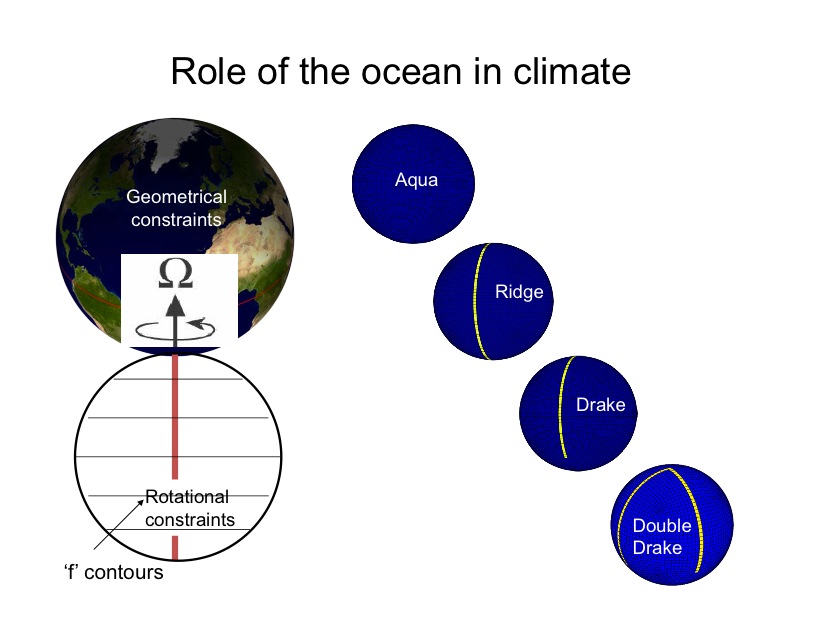Bridging the gap > John Marshall
Climates of
earth-like ocean exoplanets
John Marshall
Massachusetts Institute of Technology, USA
earth-like ocean exoplanets
John Marshall
Massachusetts Institute of Technology, USA



Abstract: One method of studying earth-like exoplanets is to view earth as an exoplanet and consider how its climate might change if, for example, its obliquity were ranged from 0 to 90 degrees. High values of obliquity particularly challenge our understanding of climate dynamics because if obliquity exceeds 54 degrees, then polar latitudes receive more energy per unit area than do equatorial latitudes. Thus the pole will become warmer than the equator and we are led to consider a world in which the meridional temperature gradients, and associated prevailing zonal wind, have the opposite sign to the present earth, and the equatorial Hadley circulation exists where it is cold rather than where it is warm. And all this is going on in the context of a very pronounced seasonal cycle. The problem becomes even richer when one considers the dynamics of an ocean, should one exist below. A central question for the ocean circulation is: what is the pattern of surface winds at high obliquities, as it is the winds that drive the ocean currents and thermohaline circulation? How do atmospheric weather systems growing in the easterly sheared middle latitude jets and subject to a global angular momentum constraint, combine to determine the surface wind pattern? Should one expect middle latitude easterly winds? If not, why not? Finally, a key aspect with regard to habitability is to understand how the atmosphere and ocean of this high obliquity planet work cooperatively together to transport energy meridionally, mediating the warmth of the poles and the coldness of the equator. How extreme are seasonal temperature fluctuations? Should one expect to find ice around the equator? Possible answers to some of these questions have been sought by experimentation with a coupled atmosphere, ocean and sea-ice General Circulation Model of an earth-like aqua-planet: i.e. a planet like our own but on which there is only an ocean but no land. The coupled climate is studied across a range of obliquities (23.5, 54 and 90). We present some of the descriptive climatology of our solutions and how they shed light on the deeper questions of coupled climate dynamics that motivate them. We also review what they tell us about habitability on such planets.
Additional materials: PDF of slides
ExoClimes 2010, Exeter, Thursday 9th Sep 2010
Additional materials: PDF of slides
ExoClimes 2010, Exeter, Thursday 9th Sep 2010
